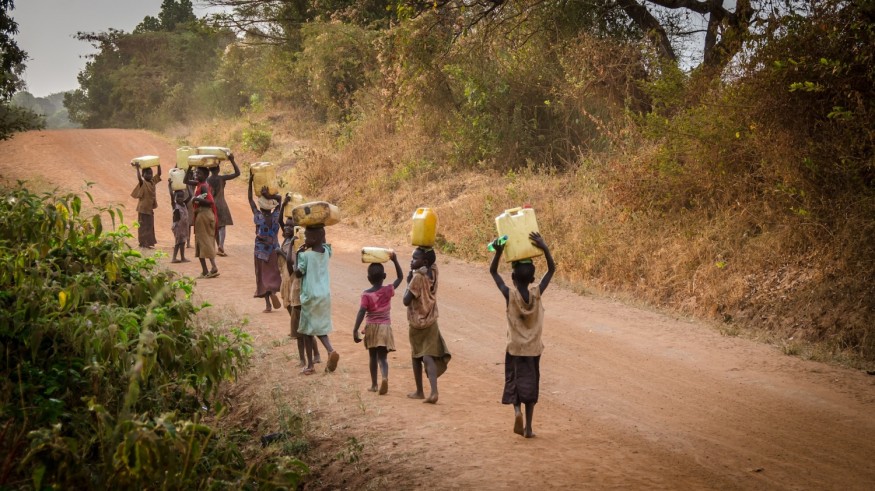
How many different ways do you use water in a single day?
While this may seem like a fairly simple question, it quickly brings us into contact with a number of complex realities. The uses of water are so numerous and so fundamental that those of us who enjoy instant access to safe, clean water are rarely ever conscious of how often we use it.
For nearly one-tenth of the earth's population, however, it is impossible not to be acutely conscious of just how precious water is. At present, 771 million people lack access to safe water. This lack of access to such a fundamental resource has a wide range of impacts not only on people's health and resistance to disease, but also their capacity to work or attend school. Women and girls in particular suffer some of the worst effects, as they are often tasked with finding and transporting water. To them, every single drop is as precious as life itself.
The Faces of Climate Change
Statistics about the scale of the global water crisis are helpful for giving us an intellectual understanding of the problem, but, at the end of the day, that is only half the battle. The truly difficult step is looking beyond the numbers to gain an understanding of what the reality on the ground is like. This crucial undertaking lies at the heart of Indian writer Neelima Vallangi and British filmmaker Deej Phillips' acclaimed new film The Weight of Water: The Human Costs of Climate Crisis.
Phillips' film is set in Nepal, a small country which, though it contributes less than 0.01% of the world's greenhouse gasses, is suffering disproportionately from the impacts of climate change. Although these impacts range across all areas of Nepalese life, they can all be traced back to that essential element-water. For example, Nepalese women are often tasked with fetching fresh water from natural springs, a time-consuming endeavor that leaves them with little time to dedicate to getting an education or earning an income while also taking a massive toll on their physical health. With the acceleration of climate change over the past three decades, nearly 50% of springs across the Hindu Kush have dried up, vastly increasing this already massive burden on women and girls.
Climate change has also severely damaged critical infrastructure through flash floods and more intense, erratic rainfall. As The Weight of Water demonstrates, these floods do not only damage roads and bridges, but integral community spaces such as the Piple Youth Club's outdoor soccer field in the city of Hetauda. The film tells the story of the destruction of this beloved space to help illustrate the smaller-scale but no less devastating effects of climate change on community life.
Getting the Message Across
The film is supported by The Zain Jaffer Foundation, a nonprofit organization that aims to creatively address the big-picture issues of our time. The Foundation supports emerging programs and projects that bring public awareness to problems such as climate change, poverty, exploitation and discrimination.
"I am humbled and excited to have had the chance to support Phillips and Vallangi's work," says Zain Jaffer, President and CEO of the Foundation. "Too often, our discussions around climate change are so abstract and removed from everyday reality that we forget that climate change is not a future potentiality, but a current reality. Phillips and Vallanji invite us to look directly at the concrete impacts of climate change on individuals and communities, and the result is both unforgettable and unignorable."
Phillips' and Vallangi's intimate, story-first approach makes the film immediately engaging to audiences of all kinds. The film's trailer has been screened at a virtual United National Development Programme (UNDP) event and the feature-length version was shown at the prestigious Awareness Film Festival in L.A.
The filmmakers, as well as Jaffer, hope that the film will bring more attention to the human costs of the global water crisis generally as well as the situation in Nepal specifically. Nepal, like many of the other developing countries that are poised to bear the brunt of climate change, has generally been underrepresented in the global climate change discourse. By showcasing the daily struggles of these communities, as well as their resilience and hope, The Weight of Water hopes to shift the discussion on climate change and the global water crisis in a more nuanced, truly global direction.
"While it's important to understand the science behind climate change, it's equally critical that we uplift the artists who are using their talents to bring attention to the different sides of this multifaceted crisis," says Jaffer. "Film has the unique capacity to transport us to other parts of the world and engage us empathetically by bringing us right up close to the lives it represents. Phillips' and Vallangi's film might focus on a few specific individuals and communities, but in the end, it is really about all of us."
© 2025 NatureWorldNews.com All rights reserved. Do not reproduce without permission.





